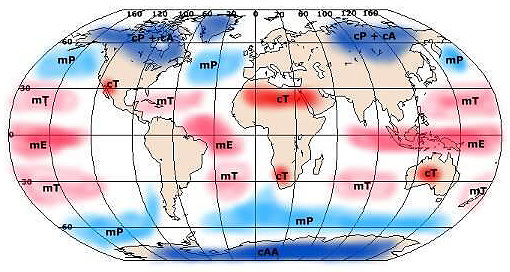Air Masses
Have you ever listened to a weather report and heard the announcer talk about an air mass; maybe a cold mass of air or a warm air mass moving into your area? An air mass is a large area of air that originates over a large region. Air masses move in response to wind and follow the trends of global wind belts. Weather is greatly determined by large air masses and their movement. As air masses move in response to global winds, they slowly take on the characteristics of the area below them. They are represented on the map below, which also shows how air masses are classified.

Air masses that form over land tend to be drier than air masses that form over water. An air mass may form in the Arctic (A), in polar regions (P), over the equator (E), or near the tropics (T). An air mass that forms over water is called maritime (m), and an air mass that forms over land is called continental (c). Air masses are shown on maps according to their place of origin and whether they formed over land or water. For example, the symbol Ec refers to an air mass that formed over the equator above land. The symbol Pm refers to an air mass that formed over water in a polar region.